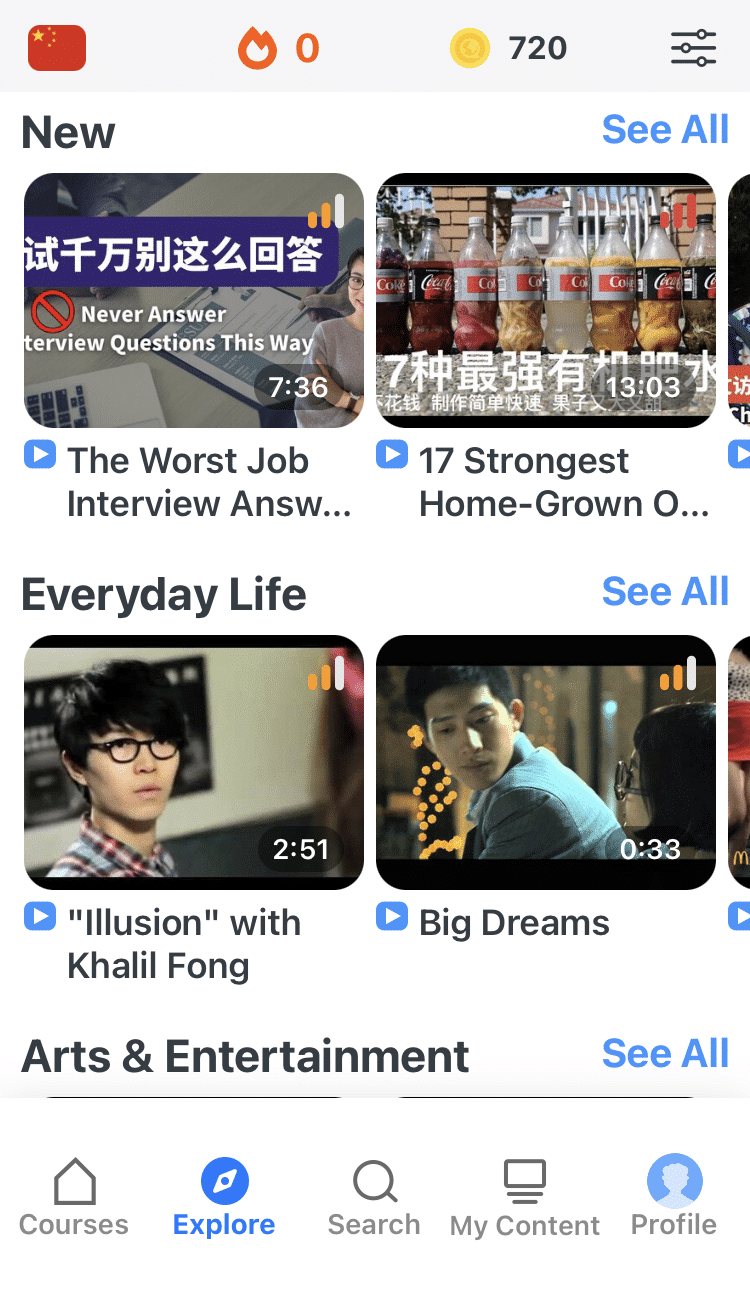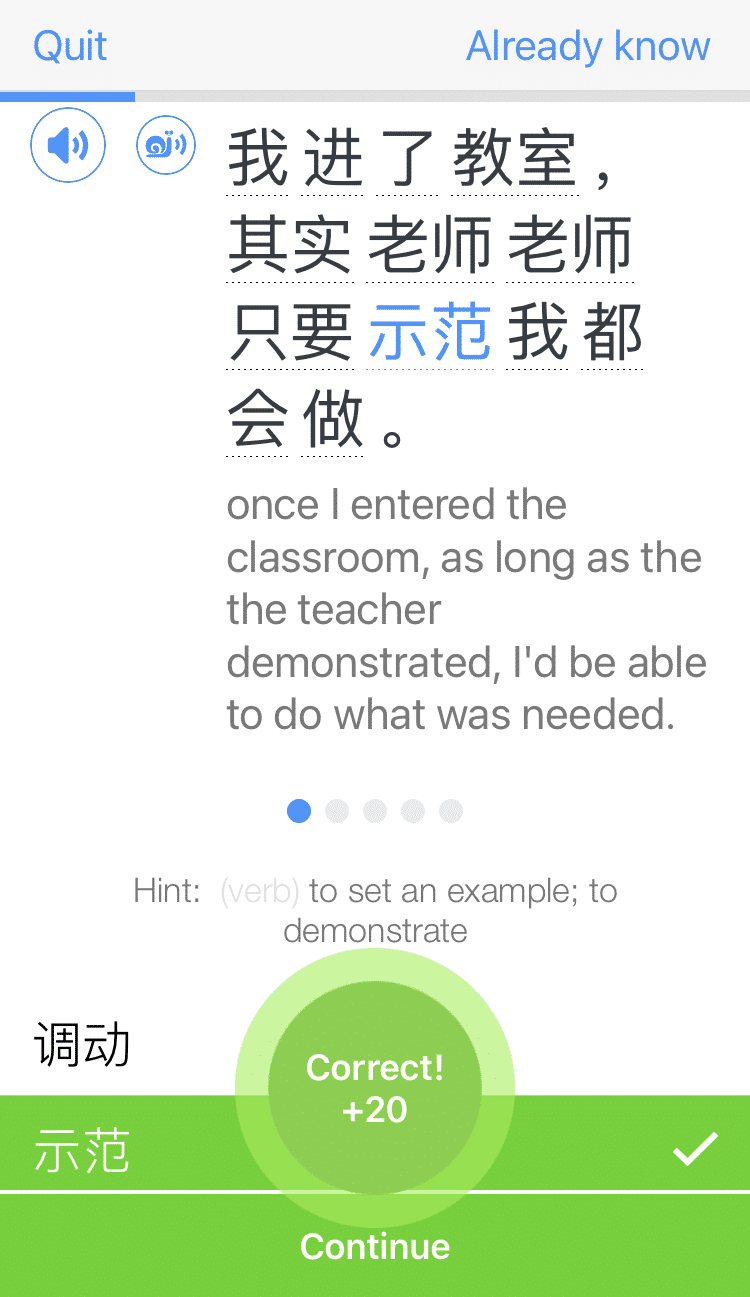
Is Chinese Hard to Learn? 4 Reasons It’s Not as Difficult as You Think
If you’re feeling intimidated by the prospect of learning Chinese, this post is for you.
The Chinese language can seem daunting thanks to the writing system, tones and more, but don’t worry! It’s not actually as difficult to learn as you might think!
So without further ado, let’s go through these common pain points for new Chinese learners and see exactly why they’re not so scary.
Contents
- Is Chinese Hard to Learn?
- Reasons Chinese Isn’t Hard to Learn
- FAQs About Learning Chinese
- Tips For Studying Chinese
- And One More Thing...
Download: This blog post is available as a convenient and portable PDF that you can take anywhere. Click here to get a copy. (Download)
Is Chinese Hard to Learn?
According to the Foreign Service Institute, Chinese is a level IV language—a “super-hard language” for English speakers to learn.
Everything is new: the writing system, the sounds, the words, the sentence structures.
But in fact, Chinese grammar is relatively simple, the characters are quite logical, learning tones is pretty quick business and you already know how to pronounce most of the sounds in Chinese.
Reasons Chinese Isn’t Hard to Learn
1. Chinese grammar is actually pretty simple.
Sure, if you speak English then French is a lot more similar to your language than Chinese. But this difference also has its advantages!
For one, Chinese grammar is often considered simple and easy to learn. Common grammar obstacles in European languages like tense and gender are nonexistent in Mandarin.
This means you’ll be constructing your own sentences within a few months of studying the language, and you’ll be understood more often than you expect. If you’ve ever studied a European language, this will seem unusual!
Consider this sentence in Chinese, where the bold word is the verb:
我去超市。 (wǒ qù chāo shì.) — I go to the store.
You’d use the same verb form whether you’re headed to the store right now, you’re going tomorrow, you went yesterday or you’re making a general statement like “I go to the store on Tuesdays.”
Pretty nice, huh? Even in English you’d have to change the verb dramatically to convey the tense.
In Chinese, however, individual words are like bricks that you’re often free to arrange in your own order. Of course, there’s definitely correct and incorrect grammar in Mandarin, but as a beginner, you’ll be amazed by how much you can do!
2. Chinese characters contain useful components.
Reading and writing in Chinese can be majorly intimidating to learners of the language. There are tens of thousands of characters and no alphabet to help you read them.
Yes, it’s true that there are many 汉字 (hàn zi) — Chinese characters to learn, and they all seem different and complex. The good news is that they come with their own helpful hints for understanding and pronouncing them.
All Chinese characters are made up of specific elements known as radicals and components. Once you’re familiar with a few of these, the writing stops looking so alien and starts to make more sense.
For example, the radical for “grass” appears in the following four characters. It’s the horizontal line with the two small vertical strokes that sits along the top of each character:
草 (cǎo) — Grass
菜 (cài) — Dish, meal or vegetables
茶 (chá) — Tea
药 (yào) — Medicine
Can you see how each of the meanings relates back to “grass”?
As you continue your Mandarin studies, more and more of these patterns will start to appear. Instead of impenetrable squiggles, you’ll see the elements that make up each individual character and, more often than not, also hold clues to their meaning and pronunciation.
Though reading a newspaper or novel will require a few thousand characters, functioning in day-to-day life is a lot easier. With just two or three hundred well-chosen characters you’ll be able to read menus, navigate public transport and even carry out basic text conversations.
Even better, you don’t really have to learn how to handwrite Chinese characters if you don’t want to—you can simply use pinyin!
3. There are only four Chinese tones.
Maybe you don’t even want to learn to read or write Chinese at all. Is it the speaking and listening that’s got you spooked?
The fact that Chinese is a tonal language is a common source of alarm for prospective learners. A tonal language means that the tone used to say a word is essential to understanding its meaning.
In terms of number of tones, Mandarin is definitely on the low end: Thai has five tones, Vietnamese has six and Cantonese is often considered to have a total of nine(!) tones.
Mandarin, on the other hand, has just four tones, as well as a “neutral tone.” Take a listen to the differences in these five words:
妈 (mā) — Mother
麻 (má) — Hemp or flax
马 (mǎ) — Horse
骂 (mà) — To scold
吗 (ma) — Particle for forming questions
Getting tone pronunciation down takes just a little bit of practice. Did you notice the line above the “a” in each word above? Follow that line with your voice, and you’ve pronounced the tone—it’s that simple! Hearing tones in use is one of the best ways to learn them. You can get plenty of practice with a program like FluentU.
FluentU takes authentic videos—like music videos, movie trailers, news and inspiring talks—and turns them into personalized language learning lessons.
You can try FluentU for free for 2 weeks. Check out the website or download the iOS app or Android app.
P.S. Click here to take advantage of our current sale! (Expires at the end of this month.)
Memorizing tones for every vocabulary word you learn may seem like a lot of work, but it takes the same brain power as memorizing noun genders in most European languages (and again, Mandarin has no gendered nouns!).
4. You already know most sounds for Chinese pronunciation.
Pronunciation is something I really struggled with at the beginning of my Mandarin learning journey, so I feel you.
If you’re a native speaker of English, you’ll find several sounds in Chinese that don’t seem to naturally occur in your language, so they can be difficult at first.
Fortunately, you can hack these tricky pronunciations by finding English syllables or letter pairings that create similar sounds!
Here are a few key sounds in Chinese pinyin with an equivalent sound in English:
- Zh is pronounced like the “ge” in “strange”
Example: 知道 (zhī dào) — Know - J is pronounced like the “jee” in “jeep”
Example: 几 (jǐ) — A few - T is pronounced like the “t” in “town”
Example: 提 (tí) — Lift - X is pronounced like the “sh” in “sheet”
Example: 休息 (xiū xi) — Rest
For a comprehensive tutorial on mastering Chinese sounds, look to this pronunciation guide.
As you encounter new words in your Mandarin studies, you can plug them into Forvo to hear them pronounced by native speakers. Don’t forget to practice imitating what you hear!
FAQs About Learning Chinese
How long will it take to learn Chinese?
The amount of time it takes to learn Chinese varies based on factors such as your language background, study methods, and how dedicated you are. The FSI suggests that it could take 2200 hours to learn the language. However, this will of course depend on the individual!
Can you learn Chinese in 1 year?
Learning Chinese to a functional level within a year is feasible for learners who are committed to doing so, especially with the help of intensive study methods like full-time language programs or immersive experiences in Chinese-speaking environments.
However, the fluency level you can achieve may vary from person to person, with some attaining only basic conversational skills while others achieve more advanced proficiency.
But with lots of dedication, you can make a huge amount of progress in just a year!
Is Japanese harder than Chinese?
Japanese and Chinese are both considered to be “exceptionally difficult” for English speakers to learn. The difficulty level of each depends on individual learners.
Japanese presents challenges with its three writing systems (kanji, hiragana, and katakana) and complex grammar. Chinese has tones and a character-based writing system. Some find Chinese grammar simpler, but mastering tones and characters can be daunting.
You can find out more about how hard Japanese is to learn here.
Tips For Studying Chinese
If you feel like you’re fighting a solo battle against the Chinese language, then of course you’re going to find it hard.
But there are plenty of non-native speakers who have studied Mandarin with great success—and they don’t mind sharing how they did it!
Language is, after all, about communication. So get out there and talk to people! Have fun with the language.
For me, Chinese didn’t really click until I hopped on a flight to Chengdu and spent six months in the thick of it. If you need to speak Chinese in order to eat, then you bet you’re going to learn pretty fast.
Even if you can’t hop on a flight right now, there are ways to make your Mandarin learning more social. You can:
- Ask some friends or family members to learn with you
- Find a practice group online or in your city through Facebook or Meetup
- Find a Chinese language exchange partner
- Try out other conversation practice methods
Sitting alone with your textbooks can be useful, but it’s not sufficient for truly understanding a foreign tongue or attaining fluency.
Plus, in my experience, native Chinese speakers are often thrilled to meet foreigners who are learning their language. Even your tentative beginner efforts will typically be met with encouragement and appreciation—which is a great motivator for learning more!
Sure, learning a language can be an immensely difficult and time-consuming task. But it’s also one of the most rewarding things you’ll ever do.
When you have your first ever conversation in Chinese, the satisfaction and sense of pride will remind you that it’s all been worth it!
Download: This blog post is available as a convenient and portable PDF that you can take anywhere. Click here to get a copy. (Download)
And One More Thing...
If you want to continue learning Chinese with interactive and authentic Chinese content, then you'll love FluentU.
FluentU naturally eases you into learning Chinese language. Native Chinese content comes within reach, and you'll learn Chinese as it's spoken in real life.
FluentU has a wide range of contemporary videos—like dramas, TV shows, commercials and music videos.
FluentU brings these native Chinese videos within reach via interactive captions. You can tap on any word to instantly look it up. All words have carefully written definitions and examples that will help you understand how a word is used. Tap to add words you'd like to review to a vocab list.
FluentU's Learn Mode turns every video into a language learning lesson. You can always swipe left or right to see more examples for the word you're learning.
The best part is that FluentU always keeps track of your vocabulary. It customizes quizzes to focus on areas that need attention and reminds you when it’s time to review what you’ve learned. You have a 100% personalized experience.
Start using the FluentU website on your computer or tablet or, better yet, download the FluentU app from the iTunes or Google Play store. Click here to take advantage of our current sale! (Expires at the end of this month.)






